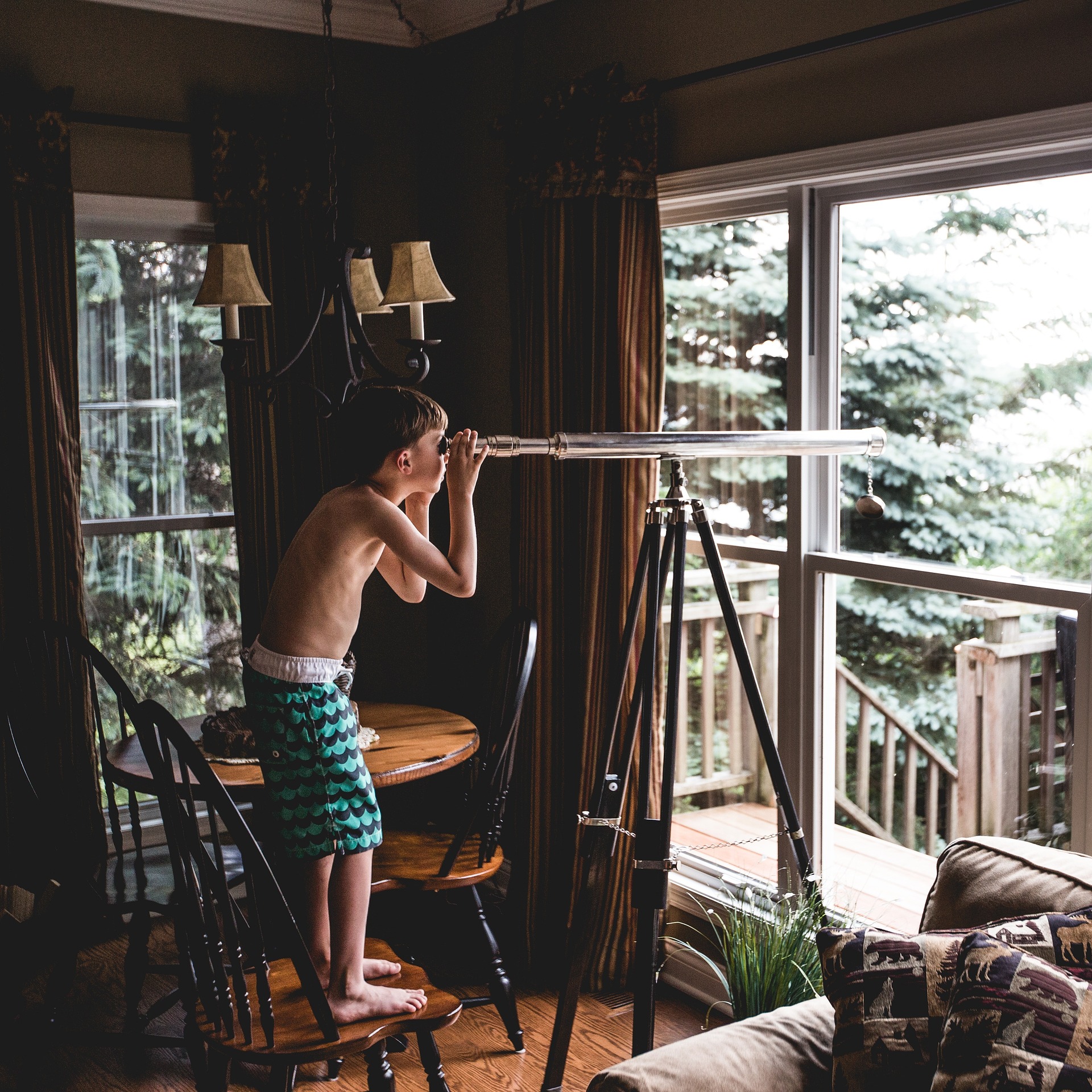Załubska Studio
Johari window and interior design

We associate interior design with adulthood and conscious shaping of the space around us. However, it turns out that it is in childhood that the process that defines people's relationship and their relationship with what is outside begins. One of the theories confirming this fact is Jean Piaged's theory. According to him, as, after birth, the child does not know words or symbols with which to define the world, it must rely on certain schemes. Mainly on the scheme of faces. The little man, gathering new data, adds it to the already existing set of impressions. He locates each new impression in the base of sensations he already had. E.g. a child learns to distinguish simply between a face and his mother's face. Which eventually enlarges his world of specific faces belonging to the category of faces in general. So the child's cognition of the external world takes place in a continuous process of finding a balance between the assimilation of information and its appropriate placement. The aforementioned Piaged also distinguishes stages of children's intellectual development that lead to intellectual maturity sequentially. He believes that at the age of about 2 - 7, a child is at the stage of symbol formation. And between the ages of 7 - 12 he can think logically. Only 15-year-olds are capable of higher order reasoning.

Child development and interior design.
Another researcher Edith Cobb distinguished another very important stage of child development called " latency" waiting time. This is the age between 5-6 to 12 years old when: "The child...is suspended between the inner and outer worlds. Three- and four-dimensional reality increasingly affects the child's imagination and takes him to deeper and deeper images of the world. It is in love with the universe. It can be said that it wants to posit the whole world as a theater of perception, of perception." Children perceive the world as a whole, as a sensory experience without a label. As an unspecified collection of unknown peculiarities, sounds, smells and images and not just as a series of signs and symbols. Thus, the external world is a variable that not only shapes human tastes or sense of aesthetics, but stimulates the continuous development of behavioral patterns or habits in the context of the surrounding space. Man makes choices and formulates views about what he likes what he likes and what he would like to surround himself with at home, at work or on vacation.

Johari window technique in interior design.
Wading further into the topic of people's perceptions of themselves, it is worth reviewing a technique called the Johari window . This is a method that was originally intended to help people better understand themselves and others. But I decided to extend it to understanding the places where one lives. For every person but also every house hides secrets. The Johari window illustrates the level of a person's self-awareness and relationship with others in four areas. - The public self called the "open area" This is a kind of public image that people try to exhibitionistically communicate. It contains all the human traits, feelings, behaviors, knowledge skills and talents of which one is aware. This area grows larger as the individual gains experience and confidence. In the context of space, on the other hand, you can also have a public version of the apartment. Such a visiting, tidy tidy, where "compromising items" which are definitely not for show, linger in secret corners. - The hidden self that is the so-called "blind area". This is the part of a person known only to others and not yet discovered by the person himself. For example, organizational or leadership abilities. Or a trait suppressed by someone, such as excessive submissiveness or aggression. Or the conviction of one's great beauty or talent, which one does not actually possess. In interiors, it's the aspect of the house that you don't notice yourself. It could be a great sense of color, or a selection of the kinds of accessories that everyone praises. Or, conversely, awful wallpaper, or trinkets in which only the homeowner sees beauty. - Private self with a "hidden area" It is such a realized, exposing weaknesses, a part of oneself that one wants to hide from others. It is considered shameful and can only be revealed when a great deal of trust is gained in another person. There may also be infamous items lurking in the home that household members are ashamed of and hide from visitors. The few and chosen few, in a gesture of trust, access the honor of seeing compromising mementos or infamous oddities. - The unconscious self called the "unknown area." This is an area of which a person is not aware himself not to mention others. Information from this place is revealed in special or new situations or in the process of getting to know oneself. Then one discovers what one tried to escape or what one did not want to remember. And, of course, every home hides its secrets unknown to either residents or visitors. And only in the process of getting to know the apartment, for example, during a major renovation, can you discover really interesting peculiarities in the form of poorly located electrical installation, or, interesting architectural details hidden from the world.
